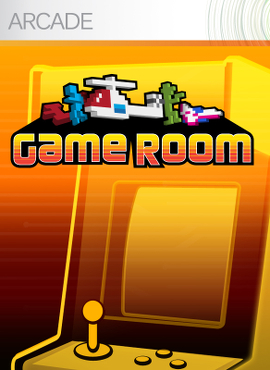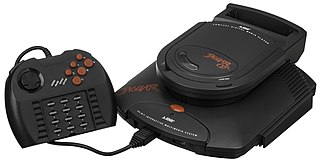
Kid Icarus is a platform video game developed and published by Nintendo for the Family Computer Disk System in Japan and the Nintendo Entertainment System in Europe and North America. It was released in Japan in December 1986, in Europe in February 1987, and in North America in July.

The history of video games began in the 1950s and 1960s as computer scientists began designing simple games and simulations on minicomputers and mainframes. Spacewar! was developed by Massachusetts Institute of Technology (MIT) student hobbyists in 1962 as one of the first such games on a video display. The first consumer video game hardware was released in the early 1970s. The first home video game console was the Magnavox Odyssey, and the first arcade video games were Computer Space and Pong. After its home console conversions, numerous companies sprang up to capture Pong's success in both the arcade and the home by cloning the game, causing a series of boom and bust cycles due to oversaturation and lack of innovation.

The Starpath Supercharger is an expansion peripheral cartridge created by Starpath, for playing cassette-based proprietary games on the Atari 2600 video game console.

Night Trap is a 1992 interactive movie developed by Digital Pictures and published by Sega for the Sega CD. Presented primarily through full-motion video (FMV), Night Trap has the player observe teenage girls having a sleepover visiting a house which, unbeknownst to them, is infested with vampires. The player watches live surveillance footage and triggers traps to capture anyone endangering the girls. The player can switch between different cameras to keep watch over the girls and eavesdrop on conversations to follow the story and listen for clues.

Lode Runner is a 2D puzzle-platform game, developed by Doug Smith and published by Broderbund in 1983. Its gameplay mechanics are similar to Space Panic from 1980. The player controls a character who must collect all the gold pieces in a level and get to the end while being chased by a number of enemies. It is one of the first games to include a level editor.

The Pokémon Mini is a handheld game console that was designed and manufactured by Nintendo in conjunction with The Pokémon Company and themed around the Pokémon media franchise. It is the smallest game system with interchangeable cartridges ever produced by Nintendo, weighing just under two and a half ounces. It was first released in North America on November 16, 2001, and was only available for purchase at the Pokémon Center and via its website. This was followed by releases in Japan on December 14, 2001, and in Europe on March 15, 2002. The system was released in three colors: Wooper Blue, Chikorita Green, and Smoochum Purple.
Homebrew, when applied to video games, refers to software produced by hobbyists for proprietary video game consoles which are not intended to be user-programmable. The official documentation is often only available to licensed developers, and these systems may use storage formats that make distribution difficult, such as ROM cartridges or encrypted CD-ROMs. Many consoles have hardware restrictions to prevent unauthorized development.
Namco Museum is a series of video game compilations developed and published by Bandai Namco Entertainment for home video game consoles. The first title in the series, Namco Museum Vol. 1, was released for the PlayStation in 1995. Entries in the series have been released for multiple platforms, including the Game Boy Advance, PlayStation 2, PlayStation Portable, Nintendo DS and Xbox 360. the latest being Namco Museum Archives Vol. 2, released in 2020.

The Sega Genesis, also known as the Mega Drive outside North America, is a 16-bit fourth generation home video game console developed and sold by Sega. It was Sega's third console and the successor to the Master System. Sega released it in 1988 in Japan as the Mega Drive, and in 1989 in North America as the Genesis. In 1990, it was distributed as the Mega Drive by Virgin Mastertronic in Europe, Ozisoft in Australasia, and Tectoy in Brazil. In South Korea, it was distributed by Samsung Electronics as the Super Gam*Boy and later the Super Aladdin Boy.
Import gamers are a subset of the video game player community that take part in the practice of playing video games from another region, usually from Japan where the majority of games for certain systems originate.

The Cheetahmen is a video game series created by Active Enterprises starring three anthropomorphic cheetahs. It was introduced in 1991, as part of the Action 52 multi-game cartridge for the NES. It is notable for its main theme, as it was later used as the overworld music in Cat Mario, as well as its extremely low quality, often being cited as one of the worst video games of all time. The Cheetahmen also appear in an unpublished sequel for the NES, Cheetahmen II, and a Sega Genesis title that was again called The Cheetahmen. Cheetahmen III was in development in 1994 for a prototype handheld console by Active Enterprises but is now considered vaporware.

A game backup device, informally called a copier, is a device for backing up ROM data from a video game cartridge to a computer file called a ROM image and playing them back on the official hardware. Recently flash cartridges, especially on the Game Boy Advance and Nintendo DS platforms, only support the latter function; they cannot be used for backing up ROM data. Game backup devices also make it possible to develop homebrew software on video game systems. Game backup devices differ from modchips in that modchips are used in conjunction with systems that use generally available media such as CDs and DVDs, whereas game backup devices are used with systems that use cartridges.

Game Room was a social gaming service for the Xbox 360 video game system, Microsoft Windows PCs, and Windows Phone 7. Launched on March 24, 2010, Game Room let players download classic video games and compete against each other for high scores. Players on both Xbox 360 and Windows PCs could access Game Room through their respective versions of Microsoft's Live online services. The servers shut down on October 31, 2017.

The first hobbyist-developed game for the Atari 2600 video game console was written in 1995, and more than 100 have been released since then. The majority of games are unlicensed clones of games for other platforms, and there are some also original games and ROM hacks. With only 128 bytes of RAM, no frame buffer, and the code and visuals closely intertwined, the 2600 is a difficult machine to program. and many games were written for the technical challenge. Emulators, programming tools, and documentation are available.
In the video game industry, digital distribution is the process of delivering video game content as digital information, without the exchange or purchase of new physical media such as ROM cartridges, magnetic storage, optical discs and flash memory cards. This process has existed since the early 1980s, but it was only with network advancements in bandwidth capabilities in the early 2000s that digital distribution became more prominent as a method of selling games. Currently, the process is dominated by online distribution over broadband Internet.

The Atari Jaguar CD is a CD-ROM peripheral for the Jaguar video game console.

AirMech is a free-to-play multiplayer online battle arena video game developed and published by Carbon Games for Windows, with Android and VR version in the works. Originally released onto Steam's early access program in November 2012 as the game was fully released in March 2018 under the name AirMech Strike, and additionally released a version on the Xbox 360, Xbox One and PlayStation 4 under the name AirMech Arena.

Coffee Crisis is a game for the Sega Genesis/Mega Drive and Microsoft Windows, developed and published by Pittsburgh-based company Mega Cat Studios. The console version was released on February 24, 2017, as a physical cartridge with printed manual.

Just Dance 2019 is a 2018 dance rhythm game developed and published by Ubisoft. It was unveiled on June 11, 2018, during its E3 press conference as the tenth main installment of the series, and was released on October 23, 2018 on Nintendo Switch, Wii, Wii U, PlayStation 4, Xbox 360, and Xbox One in North America. It was also released on October 25, 2018 in Europe and Australia. A demo for the game was released on November 12, 2018, on Xbox One, PlayStation 4, Wii U, and Nintendo Switch.

Namcot Collection, also known as Namco Museum Archives, is a 2020 video game compilation published by Bandai Namco Entertainment. Originally released in Japan for the Nintendo Switch, it was localized for international territories as two separate collections, Namco Museum Archives Vol. 1 and Vol. 2, for the Switch, Xbox One, PlayStation 4, and Windows. Namcot Collection includes a wide array of video games published by Namco for the Family Computer and Nintendo Entertainment System, with save states, achievements, and homebrew ports of Pac-Man Championship Edition and Gaplus.

















